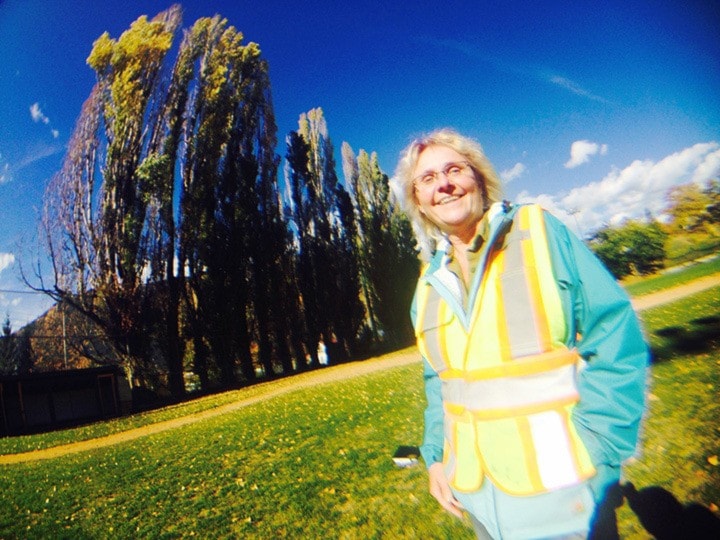For decades, it seemed the sky was the limit for Queen Elizabeth Park’s towering poplar trees. In fact, the end is very near.
With some of the giant poplars teetering at nearly 80 feet (24 m) high, the old trees have reached the end of their lives.
“Nelson’s trees make up such an important part of the city’s character,” says Mayor Deb Kozak. “But overall, our entire urban forest is in decline. Over the next few decades, we’ll have to replace a lot of trees. Many of them start to fail, and become quite unsafe.”
And that’s the case with the Lombardy poplars in Fairview, which run along the western side of the city’s primary baseball and fastball park.
“This is going to be a huge job,” says public works supervisor Karen MacDonald. “But they’ve got to go — they’re rotting from the inside, they’re increasingly unstable and their big roots are tearing up the asphalt that runs along the park’s border and the adjacent alley.”
MacDonald says city crews will begin falling the monstrous poplars next week. She anticipates the job will take roughly ten days.
But with the city’s aim to plant two trees in town for every one they take down, the Lombardy row will be replaced with fast growing columnar oaks, which will grow to 70 feet (21 m) at full maturity.
Noting the city’s tree management plan, Kozak points out Nelson has approximately 30,000 trees in its parks, other City-owned properties and private properties.
There are 480 designated heritage trees including ash, maple, oak, chestnut, and elms.
“And many of those heritage trees — lots of them planted in the 1920s — have reached maturity too,” she says.
“That’s why we created the tree management plan, to protect and conserve the city’s trees, to manage the removal of the trees that have to go, and to steward the on-going renewal of the city’s tremendous treed character.”

